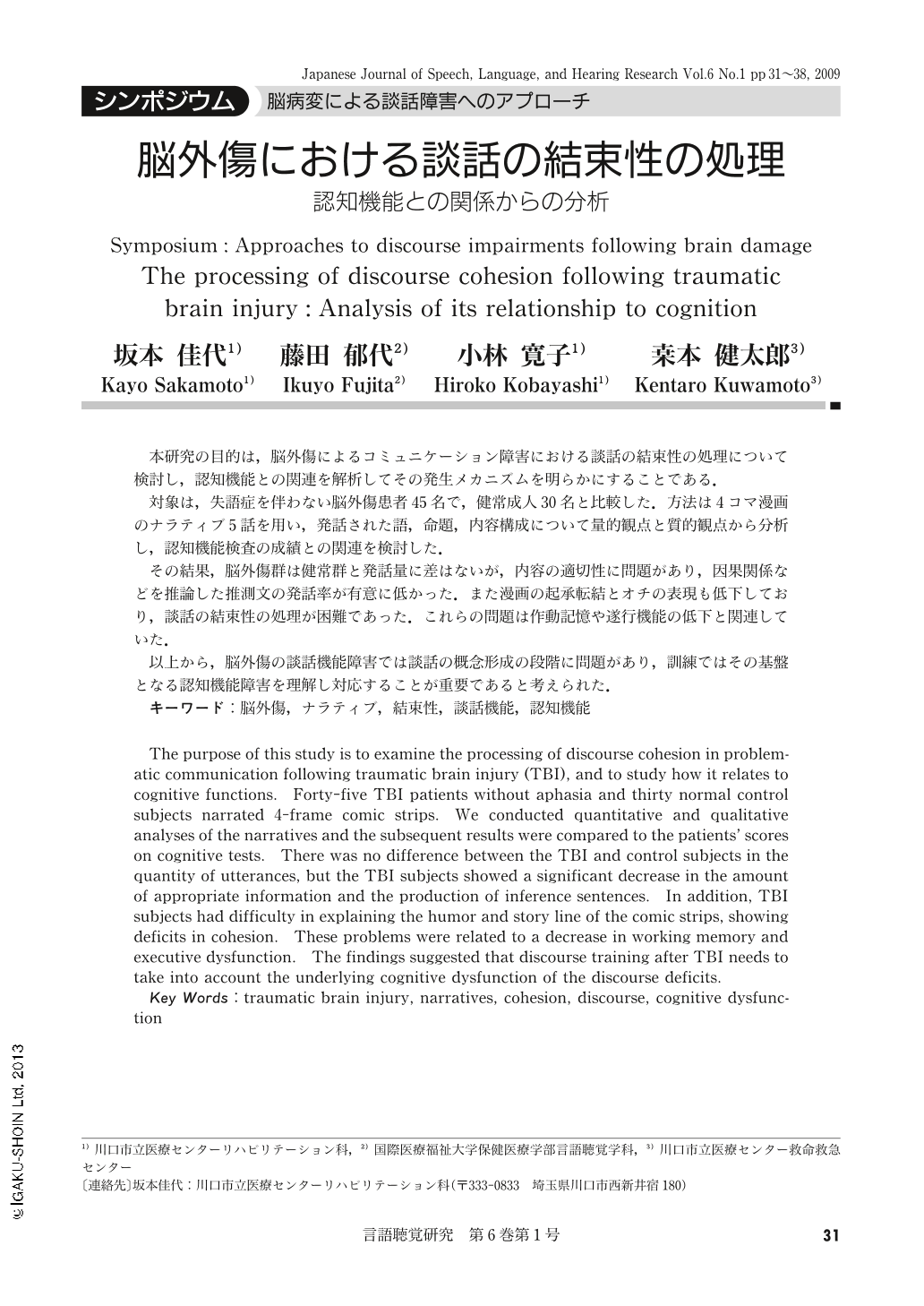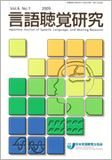Japanese
English
- 有料閲覧
- Abstract 文献概要
- 1ページ目 Look Inside
- 参考文献 Reference
- サイト内被引用 Cited by
本研究の目的は,脳外傷によるコミュニケーション障害における談話の結束性の処理について検討し,認知機能との関連を解析してその発生メカニズムを明らかにすることである.
対象は,失語症を伴わない脳外傷患者45名で,健常成人30名と比較した.方法は4コマ漫画のナラティブ5話を用い,発話された語,命題,内容構成について量的観点と質的観点から分析し,認知機能検査の成績との関連を検討した.
その結果,脳外傷群は健常群と発話量に差はないが,内容の適切性に問題があり,因果関係などを推論した推測文の発話率が有意に低かった.また漫画の起承転結とオチの表現も低下しており,談話の結束性の処理が困難であった.これらの問題は作動記憶や遂行機能の低下と関連していた.
以上から,脳外傷の談話機能障害では談話の概念形成の段階に問題があり,訓練ではその基盤となる認知機能障害を理解し対応することが重要であると考えられた.
The purpose of this study is to examine the processing of discourse cohesion in problematic communication following traumatic brain injury (TBI), and to study how it relates to cognitive functions. Forty-five TBI patients without aphasia and thirty normal control subjects narrated 4-frame comic strips. We conducted quantitative and qualitative analyses of the narratives and the subsequent results were compared to the patients' scores on cognitive tests. There was no difference between the TBI and control subjects in the quantity of utterances, but the TBI subjects showed a significant decrease in the amount of appropriate information and the production of inference sentences. In addition, TBI subjects had difficulty in explaining the humor and story line of the comic strips, showing deficits in cohesion. These problems were related to a decrease in working memory and executive dysfunction. The findings suggested that discourse training after TBI needs to take into account the underlying cognitive dysfunction of the discourse deficits.

Copyright © 2009, Japanese Association of Speech-Language-Hearing Therapists. All rights reserved.


